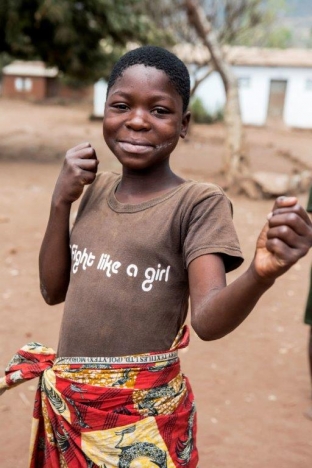
by Molly Fitzgerald, Plan International USA
The 2030 Agenda for Sustainable Development sets forth 17 Sustainable Development Goals (SDGs) cutting across all sectors. This new agenda reflects an increasing awareness among the development community that vibrant societies and economies rely on thriving health, education, environmental and social sectors. Now is an ideal time to take stock of the important role the social service workforce will play in achieving these goals, particularly in advancing rights for women and girls.
Gender equality features prominently in the SDG Agenda. SDG 5 is dedicated solely to gender equality, because women and girls’ inequality remains a significant barrier to achieving all the other SGDs. In addition to ending discrimination against women and girls, SDG 5 sets specific targets around social welfare including: the protection against violence and harmful practices including child, early and forced marriage; assurances for access to sexual and reproductive health services; and equal and full participation in economic, political and public life. We must all be concerned about the global status of women and girls’ equality. As participants, advocates, members or beneficiaries of the social service workforce, we recognize that a stronger workforce is better equipped to address and advance these issues. They are vital members of their communities, helping women and girls recognize and fully achieve equal rights.
Unfortunately, the global status of women and girls lags far behind on most of these important targets. Globally, an estimated 35 per cent of women experience physical or sexual violence.[1] A third of girls living in the developing world marry before age 18, and one in nine marry before the age of fifteen.[2]
Regional and country variations reveal even greater gender disparities, particularly in Sub-Saharan Africa, where girls and young women account for between two thirds and three quarters of new HIV infections among adolescents.[3] Poor health and social outcomes result from failures in other social sectors to achieve targets for gender equality. In Malawi for example, females have less control over household resources, lower wages, less political participation, and lower enrollment in secondary and tertiary education.[4] Malawian adolescent girls (ages 15-19) are 10 times more likely to be forced into marriage than boys.[5] Female youth are less knowledgeable about HIV and are less likely to use condoms than young males of the same age.[6]
These converging factors enhance vulnerability to HIV infection leading to worse health outcomes -- Malawian adolescent girls and young women are more than twice as likely to be HIV positive.[7] Girls also experience higher rates of malnutrition, shorter life expectancy and poverty, further undermining equal participation in the education, labor and social sectors.
These inequalities place a heavy burden on the social service workforce. Morbidity and shorter life expectancies related to HIV, malnutrition and widespread poverty increase the demand while also contributing to the challenges faced in meeting the workforce needs. As the leading cause of death in Malawi, AIDS has contributed to a 12 percent prevalence of orphaned children.[8] While tradition encourages community and extended family support for orphans and vulnerable children in Malawi, poverty compounded by recent draught in the country makes this challenging. Approximately, one fifth of all Malawian families are providing care for orphans and vulnerable children; women and girls often carry the brunt of this burden.[9] Even with a large proportion of volunteers and community support, the social welfare workforce struggles to meet the demands. Efforts to meet the demand have included economic, educational and caregiver support to strengthen families.[10] Given the massive human resource gaps in the formal health and social service workforce, strengthening the capacity and coordination among services is a priority.
Plan International implements gender equitable programming for girls and women. Through the USAID funded One Community, led by Johns Hopkins Center for Communication Programs, Plan has also been tasked with DREAMS, PEPFAR’s new initiative to reduce new HIV infections among vulnerable adolescent girls and young women.[11] DREAMS addresses positive sexual health behaviors, increases access to sexual and reproductive health services, and creates an enabling environment for AGYW by supporting caregivers, addressing harmful community norms and practices, and creating safe spaces for AGYW in schools and in communities.[12]
Women and girls have an important role to play in closing this gap in strengthening the social service workforce. Representing more than 52 percent of the population in Malawi, and as essential actors in the social service system, certainly the best way to do this is to promote their welfare and protection.[13] This will reduce the demands on the workforce and services; it will also secure the health and well-being of families and communities as key components of a strong social welfare workforce.
Without assuring the welfare and protection of women and girls, we will never be able to achieve and sustain a strong workforce.
At Plan International we fight every day for a future in which girls and young women can enjoy the same opportunities and have the same ambitions as their brothers.
Plan International / Erik Thallhaug
